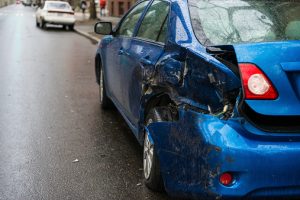-
 Wrong-Way Crashes in WichitaView Article
Wrong-Way Crashes in WichitaView ArticleWrong-way crashes can be among the most injurious and devastating of all accidents. Wrong-way drivers often cause head-on collisions, which generate significant force – and can therefore cause significant injuries. Victims of wrong-way collision injuries have important legal rights. With the legal advice of a Wichita car accident attorney, accident victims will be better able to […]
-
 Wichita Drivers More Likely to Crash in Rural AreasView Article
Wichita Drivers More Likely to Crash in Rural AreasView ArticleDecades of research have provided valuable insight into the risk factors for auto accidents. With effective planning and safe driving habits, drivers can effectively mitigate these risks to reduce their chances of being involved in a car accident. Now, new research has uncovered a new risk factor: driving in rural areas. Learn more about how […]
-
 Preventing Kansas Crashes with Truck Safety TechnologyView Article
Preventing Kansas Crashes with Truck Safety TechnologyView ArticleThe damage caused by Truck accidents can be severe. In order ensure road safety, the Kansas Corporation Commission have put strict regulations in place to for commercial vehicles weighing more than 10,000 pounds. Mechanical regulations include, but are not limited to, safety hitches, trailer braking systems, tire conditions, and periodic inspections. According to the Kansas Department of Transportation, […]
-
 Rear-End and Tractor-Trailer Accidents in WichitaView Article
Rear-End and Tractor-Trailer Accidents in WichitaView ArticleSemi-trucks, eighteen-wheelers, tractor-trailers and other heavy vehicles are known to cause severe injuries to car accident victims. Smaller, lighter vehicles have less momentum, and are therefore a less powerful mechanism of injury. Regardless of the severity of injuries sustained, car accident victims have the legal right to be compensated for their injuries and losses. An […]
-
 Teen Drivers Face Risks on the Roads of Western KansasView Article
Teen Drivers Face Risks on the Roads of Western KansasView ArticleTeen drivers are more likely to be involved in car accidents than older, more experienced drivers. This simple statistic results in tragic injuries and deaths which devastate teens and their families. Luckily, following basic rules for safe driving can help mitigate the risk of being involved in a car accident. And when wrecks do occur, […]
-
 Children Vulnerable in Wichita Car AccidentsView Article
Children Vulnerable in Wichita Car AccidentsView ArticleParents work hard to protect our children every day. So it is scary to think that a child’s risk of serious injury or death is extremely high for an activity as mundane and commonplace as getting into a car. The National Highway Traffic Safety Administration (NHTSA) reports that of the 33,000 people who die in U.S. motor […]
-
 Kansas Wrongful Death at Carnival Underscores Urgency of OversightView Article
Kansas Wrongful Death at Carnival Underscores Urgency of OversightView ArticleAmusement parks, carnivals and fairs are plentiful in summertime. Given that these events and rides are open to the public, site owners and ride operators owe a duty of care to ensure both are reasonably safe, and that the public is warned of any dangers that may not be open and obvious. When a 10-year-old […]
-
 To Avoid Negligent Security Claims, Universities Ban Guns at GamesView Article
To Avoid Negligent Security Claims, Universities Ban Guns at GamesView ArticleStarting this summer, the three biggest universities in Kansas will be allowed to ban firearms at large sporting events. That’s thanks to a ruling by the Kansas Board of Regents’ governance committee, which approved the schools’ requests for this and other security measures, including: These measures could be installed either temporarily or permanently, on the […]
-
 Stricter Penalties for Hit-and-Run Accidents in Wichita: A QuestionView Article
Stricter Penalties for Hit-and-Run Accidents in Wichita: A QuestionView ArticleFamilies who have lost loved ones in Kansas hit-and-run accidents are pressing for tougher laws to penalize offenders, and hopefully make these incidents less common. In 2011, Kansas adopted new laws pertaining to hit-and-run accidents. Hit-and-run became a felony with “presumptive jail-time,” which meant a hit-and-run driver found guilty would be presumed to be deserving of […]
-
 Wichita Drivers at Risk of Crashes Caused by Aggressive DrivingView Article
Wichita Drivers at Risk of Crashes Caused by Aggressive DrivingView ArticleA tragic motor vehicle accident occurred in Kansas recently when five members of a family who were traveling together in a van were killed after a tractor-trailer hit the family car head-on. KAKE.com reports that the deadly collision happened when one tractor-trailer was trying to pass another big truck. The incident happened shortly after 8 PM on a […]


